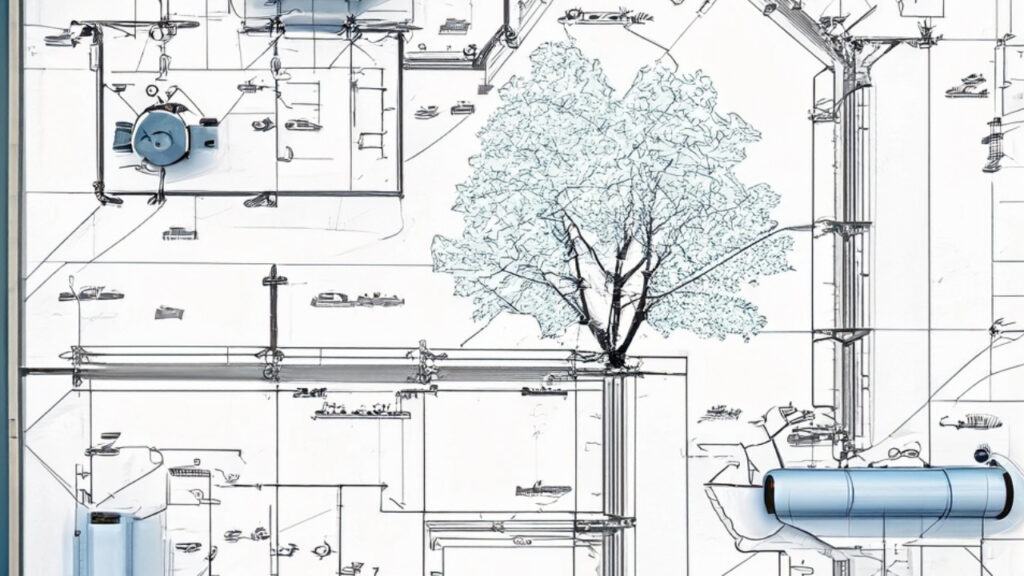Around the world, regions are setting aggressive targets and making commitments to reduce carbon emissions, and the industry is responding. The industry is shifting from simple, financially driven energy efficiency measures to complex decarbonization retrofits driven by emissions targets. However, this transition brings a new learning curve to managing and implementing these complex projects. While there is no one-size-fits-all approach for successful decarbonization projects, one thing is for sure: a business-as-usual approach to retrofits is not working. Systems are underperforming, time and money are being spent to fix equipment incorrectly set up in the first place, and the targets driving this work are not being achieved.
Energy efficiency retrofits are all things considered, relatively straightforward. You add a sensor here, update a control strategy there, switch out some lights, and you have savings. Of course, there are complex efficiency measures that require proper commissioning, but, as a whole, efficiency measures are simpler. On the other hand, your typical decarbonization project might involve designing, installing, and effectively commissioning a heat recovery chiller system or retrofitting the entire building envelope. These decarbonization projects are complex. They typically involve multiple building systems and require collaboration between engineering disciplines, contractors, and other stakeholders. They are also higher risk, not only as far as design and construction are concerned but also when it comes to ongoing maintenance. With typical energy efficiency projects, let’s say you install a CO2 sensor, and someone overrides the control such that you don’t realize your savings anymore; well, you lose out on a few GJ of savings and maybe sacrifice your payback slightly. But if you install a $2 million low-carbon heating system and it’s not working, well, now, you are not achieving your carbon reduction goals. You are also likely spending more on energy, and this costly equipment is sitting idle. Or, worse yet, it’s operating such that it will fail prematurely.
Given the complexity, costs, risks, and stakes of these low-carbon retrofits, you’d think everyone involved in decarbonization would approach and manage these projects differently, but that’s often not the case. Low-carbon retrofits are being evaluated, implemented, and commissioned in the same way as simple energy efficiency upgrades, and, not surprisingly, many of them are unsuccessful. We constantly see consultants and contractors selected not based on their experience or ability but on who has the lowest bid. We see commissioning as an afterthought with little time, energy, or patience reserved for when the system is being tested and correct operation is achieved. We see procurement processes that hamper collaboration between disciplines and stakeholders, a critical piece for deep energy retrofit projects.
People are losing faith in the technologies and projects because of the issues that some early adopters see with decarbonization projects. They are becoming skeptical or unwilling to take on future projects. This is a severe problem because, despite their challenges, low-carbon technologies are the most viable path to meeting our emission reduction targets. But if we start achieving these targets, we must stop making the same mistakes, learn from others, and adapt our systems and processes to fit these new types of projects better.
Large-scale decarbonization is complex. Things are going to go wrong. Things are going to be more complicated than you thought – you’ll find asbestos in the walls, or you realize that the scale of your upgrade is going to require a new fire suppression system, which will add costs you didn’t account for, or the heat pump won’t work the first time or the second time you try and commission it so if you are involved in decarbonization at any scale. These are my recommendations to you:
- Plan before you decarbonize so you can make sure what you are doing things in the optimal order and what you are selecting today will align with your goals 10,15,20 years in the future.
- Select consultants, contractors and installers who have experience and will be able to support you when, not if, things go wrong, not just the ones with the lowest price.
- Set up your procurement processes and project management systems to allow for collaboration between engineering disciplines, contractors, construction managers, cost consultants, commissioning agents, operators and stakeholders. More collaboration means a higher probability of success.
- Build on the energy efficiency work you’ve already done. Smart buildings are going to be key to designing and operating low-carbon equipment as well as to achieving emissions targets.
- And most of all, don’t give up on decarbonization projects. We are on the bleeding edge right now, and it’s hard, but the industry is learning quickly, and training is becoming available to help support you so you don’t have to struggle through the same mistakes that others before you have made.
SES Consulting is a consulting firm with over 20 years of decarbonization and energy efficiency experience. We have helped clients in commercial, industrial, institutional, healthcare and multi-unit residential sectors to decarbonize their facilities. We’ve made mistakes, watched others make mistakes, seen projects fail, and seen them succeed, and now we help others by developing and teaching decarbonization courses. Our courses are designed to support you through each stage of the decarbonization process to minimize costs, maximize savings, avoid common pitfalls and increase your chances of success.
If you wish to learn more about our courses as well as some other decarbonization courses on the market
- Canadian Institute of Energy Training (CIET): https://cietcanada.com/training-programs-cat/decarbonization/
- Heat Pump Essentials
- Planning and Selecting GHG Reduction Projects
- Making the Case for Decarbonization Projects
- Achieving Net Zero Buildings
- Nexus Labs Decarbonization Curriculum: https://www.nexuslabs.online/smart-building-strategist
- Decarbonization Awareness (Coming December 2023)
- Decarbonization Strategist (Coming early 2024)



